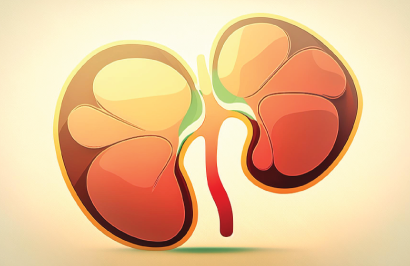Know More About Chronic Kidney Diseases with the Best
Nephrologist in Lucknow The pancreas, though small, plays a vital role in the digestive and endocrine systems. This organ, located behind the stomach, produces digestive enzymes and hormones crucial for maintaining blood sugar levels. However, when the pancreas is affected by disease, it can lead to significant health complications. In this article, we will explore various types of pancreatic diseases, their symptoms, causes, diagnosis, and treatment options you’ll get when you search for a hospital near me.
Pancreatitis
Pancreatitis refers to the inflammation of the pancreas and can be acute or chronic. Acute pancreatitis typically occurs suddenly and may be caused by gallstones, excessive alcohol consumption, infections, or certain medications. Chronic pancreatitis, on the other hand, develops gradually and is often associated with long-term alcohol abuse, smoking, or genetic factors.
What are the Symptoms of Chronic Kidney Diseases?
Often, people tend to assume that they are suffering from chronic kidney diseases because the symptoms either don’t develop at the early stages or are so common that people neglect them. By the time the person notices the symptoms, the damage to the kidneys is at an irreversible stage. Here are some of the most common symptoms of chronic kidney disease:
- Symptoms: The symptoms of pancreatitis may include severe abdominal pain, nausea, vomiting, fever, rapid pulse, and tenderness in the abdomen.
- Diagnosis: Diagnosis of pancreatitis involves physical examination, blood tests to check for elevated levels of pancreatic enzymes, imaging tests such as CT scans or MRIs, and sometimes endoscopic procedures like endoscopic ultrasound (EUS) or endoscopic retrograde cholangiopancreatography (ERCP).
Pancreatic Cancer
Pancreatic cancer is one of the deadliest forms of cancer and is often diagnosed at an advanced stage due to its nonspecific symptoms and rapid spread. Risk factors for pancreatic cancer include smoking, obesity, chronic pancreatitis, a family history of the disease, and certain genetic syndromes.
- Symptoms: Symptoms of pancreatic cancer may include jaundice, abdominal pain that radiates to the back, unexplained weight loss, loss of appetite, nausea, changes in stool color, and new-onset diabetes.
- Diagnosis: You can get yourself diagnosed with pancreatic cancer by searching for a hospital near me. It typically involves imaging tests such as CT scans, MRIs, or endoscopic ultrasound (EUS), as well as a biopsy to confirm the presence of cancerous cells.
- Treatment: Treatment options for pancreatic cancer depend on the stage of the disease but may include surgery, chemotherapy, radiation therapy, targeted therapy, immunotherapy, or a combination of these approaches. Palliative care may also be provided to manage symptoms and improve the quality of life for patients with advanced pancreatic cancer.
Pancreatic Cysts
Pancreatic cysts are fluid-filled sacs that develop within the pancreas and are often discovered incidentally during imaging tests for other conditions. While many pancreatic cysts are benign and require no treatment, some may become cancerous or cause complications such as infection or obstruction of the pancreatic ducts.
- Symptoms: Pancreatic cysts may not cause any symptoms, but if they become large or cause complications, patients may experience abdominal pain, nausea, vomiting, or jaundice.
- Diagnosis: Diagnosis of pancreatic cysts may involve imaging tests such as CT scans, MRIs, or endoscopic ultrasound (EUS), as well as analysis of fluid obtained through fine-needle aspiration (FNA) or endoscopic ultrasound-guided fine-needle aspiration (EUS-FNA).
- Treatment: Treatment for pancreatic cysts depends on their size, location, and risk of malignancy. Small, asymptomatic cysts may be monitored with periodic imaging tests, while larger or high-risk cysts may require drainage, surgical removal, or close surveillance to detect any changes over time.
What are the Stages of Chronic Kidney Diseases?
Chronic kidney diseases develop over time, and there are five stages to the condition. The stages are based on how much the kidneys are damaged and how well they work. When you search for a hospital near me to diagnose your kidney issues, the doctor uses glomerular filtration rate (GFR) to determine the situation. These stages range from mild to severe, as stated below:
- Stage 1: At this stage, the kidney damage often gets neglected. Upon testing, it looks like the kidney is working normally, but there are signs of kidney damage. These signs can include protein in the urine or physical damage.
- Stage 2: At stage 2, the GFR test indicates additional signs of kidney damage. One can consult the doctor for medications to protect the kidneys from further damage.
- Stage 3: The kidneys start to show mild to moderate damage, and one can notice some symptoms of chronic kidney diseases at this stage.
- Stage 4: This is a serious stage of chronic kidney issues, and the kidneys are moderately to severely damaged. At this stage, the person can face symptoms including swelling, back pain, and frequent urination. The complications of anaemia and bone diseases are more likely to occur.
- Stage 5: At this stage, the kidneys are highly damaged, or there is a high possibility of kidney failure. If the person has kidney failure, they need to take dialysis treatment or undergo a kidney transplant to survive.
Pancreatic Neuroendocrine Tumors (PNETs)
Pancreatic neuroendocrine tumors (PNETs), also known as islet cell tumors, are rare tumorsthat develop from the hormone-producing cells of the pancreas. These tumors can be benign or malignant and may produce hormones that cause various symptoms, depending on the type of hormone involved.
- Symptoms: Symptoms of PNETs may vary depending on the hormones they produce but may include abdominal pain, diarrhea, flushing, wheezing, rapid heartbeat, low blood sugar (hypoglycemia), or symptoms related to the specific hormone being overproduced.
- Diagnosis: Diagnosis of PNETs involves imaging tests such as CT scans, MRIs, or octreotide scans to locate the tumor and determine its size and extent. Blood tests may also be conducted to measure hormone levels, and a biopsy may be performed to confirm the diagnosis.
- Treatment: Treatment options for PNETs depend on the size, location, and aggressiveness of the tumor, as well as whether it has spread to other parts of the body. Treatment may include surgery to remove the tumor, chemotherapy, targeted therapy, radiation therapy, or a combination of these approaches. Hormone therapy may also be used to manage symptoms caused by hormone-producing tumors. For emergency treatment, you can search for a hospital near me to get instant and reliable results.
In conclusion, pancreatic diseases encompass a wide range of conditions that can vary in severity and complexity. Early detection and prompt treatment are essential for improving outcomes and quality of life for patients with pancreatic diseases. If you experience any symptoms suggestive of pancreatic problems, it is important to seek medical attention promptly from DP Bora Superspeciality Hospital for proper evaluation and management.


